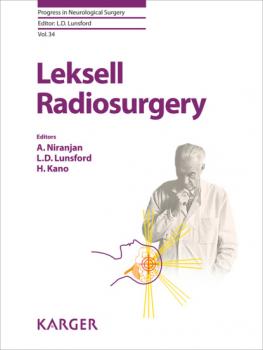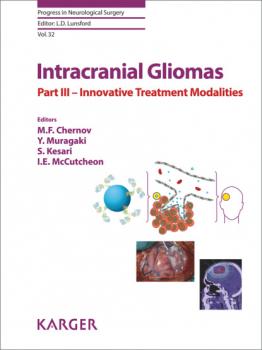ТОП просматриваемых книг сайта:
Progress in Neurological Surgery
Скачать книги из серии Progress in Neurological SurgeryАннотация
Since its introduction 52 years ago, Leksell radiosurgery has become a widely applied technique for the management of a diverse group of vascular, neoplastic, and functional disorders. This publication presents an update on state-of-the-art radiosurgery technology, including outcomes, by the pioneers in the field. Experts have contributed chapters on various topics. They provide a history of the development of Leksell Gamma Knife and its evolution from frame-based to the inclusion of mask-based radiosurgery in the latest Gamma Knife model. For beginners, there is valuable information related to imaging, quality assurance, patient care, anesthesia, and regulatory requirements. Advance users will appreciate the summary of the long-term outcome of important indications. Additional chapters on cavernous malformation, orbital, uveal, and ocular disorders clarify the role of radiosurgery. This book is a concise overview for physicians interested in radiosurgery. It will be of great value to neurosurgeons, radiation oncologists, and medical physicists concerned with learning about the indications of radiosurgery.
Intracranial Gliomas Part III - Innovative Treatment Modalities - Группа авторов
Progress in Neurological SurgeryАннотация
At present most intracranial gliomas are considered incurable with current treatment strategies, and the search for new modalities that may effectively control tumor growth continues. The chapters in this volume describe basic principles and therapeutic possibilities of several innovative techniques, including photodynamic therapy, laser-induced interstitial thermotherapy, stereotactic cryodestruction, high-intensity focused ultrasound ablation, boron neutron capture therapy, proton and carbon ion irradiation, targeted therapy, immunotherapy, gene therapy, local chemotherapy, and alternating electric fields therapy. Potential applications of extracellular vesicles and nanotechnology for management of gliomas are highlighted as well. Many of these methods have already demonstrated antitumor efficacy in clinical testing, whereas others are still under development. The materials presented in this book are mainly directed at clinicians treating patients with brain tumors, as well as clinical and basic researchers working in the field of neuro-oncology.
Аннотация
Treatment of patients with intracranial gliomas, especially high-grade neoplasms, usually requires postoperative adjuvant therapy. Significant progress in the understanding of tumor biology, technological advances in irradiation delivery, and development of novel antitumor drugs have led to an expansion of the therapeutic arsenal in neuro-oncology. This publication provides a unique review of the various options for adjuvant therapy. Special emphasis is on current evidence-based treatment standards and guidelines, and on perspectives of further improvement in long-term outcomes. Chapters review the histopathological and molecular features of gliomas and describe basic principles and clinical results of fractionated radiotherapy, stereotactic radiosurgery, brachytherapy, use of radiosensitizers, systemic chemotherapy and antiangiogenic therapy. Particular attention is paid to treatment of pediatric patients and to physical and psychological rehabilitation and supportive care at the end of life. This book and its accompanying volumes are mainly directed at neuro-oncologists, radiation oncologists, and other clinicians treating patients with brain tumors.
Аннотация
This book summarizes the current state of movement disorder management and the role of surgical therapies as an alternative to medication. Following a chapter on the history of movement disorder surgery, leaders in their fields describe the pathophysiology, functional neuroanatomy, clinical presentation, and medical management of Parkinson’s disease, dystonia, and essential tremor. This is followed by chapters on the spectrum of movement disorder surgery itself, from the lesioning procedures of radiofrequency ablation, stereotactic radiosurgery, and high-frequency ultrasound to the modulatory procedures of “asleep”, image-guided deep brain stimulation (DBS) and “awake”, microelectrode-guided DBS. The final chapters focus on closed-loop DBS, drug-delivery, gene therapy, and other emerging neurosurgical therapies, highlighting long-standing experimental strategies that are reaching exciting phases of clinical translation. This volume is a valuable tool for accessing the wide spectrum of concepts that currently define this dynamic field.




